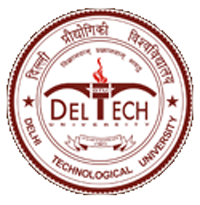Please use this identifier to cite or link to this item:
http://dspace.dtu.ac.in:8080/jspui/handle/repository/22043| Title: | STUDY AND ANALYSIS OF DEEP LEARNING MODELS FOR FORECASTING INDIAN CROP PRICES |
| Authors: | SRIVASTAVA, SRIJAN |
| Keywords: | DEEP LEARNING MODELS INDIAN CROP PRICES FORECASTING LSTM |
| Issue Date: | May-2025 |
| Series/Report no.: | TD-8122; |
| Abstract: | iv ABSTRACT Recent advancements in Artificial Intelligence (AI), Machine Learning (ML), and Deep Learning (DL) have significantly enhanced predictive modeling and decision- making in agriculture and agroeconomics. This thesis presents a comprehensive review and empirical evaluation of state-of-the-art AI/ML techniques applied to agricultural forecasting, with a particular focus on crop price prediction, yield estimation, and supply chain optimization. The review critically analyzes 17 influential studies published between 2021 and 2024, highlighting the effectiveness of deep learning models such as Long Short-Term Memory (LSTM) networks, Transformers, and hybrid architectures like Fuzzy-Neural Networks, as well as traditional econometric models. Empirical evidence indicates that LSTM and Transformer models reduce forecasting errors by 15% to 30% compared to classical models like ARIMA, while hybrid models achieve R² scores exceeding 0.90 in volatile market settings. Despite these advances, challenges such as data sparsity in smallholder contexts and the high computational demands of deep learning architectures can reduce model accuracy by up to 25% and limit real-world applicability. Complementing the review, this thesis also undertakes an in-depth case study on agricultural price forecasting in the Azadpur Market, Delhi—Asia’s largest wholesale market—focusing on the volatile pricing of Tomato, Onion, and Potato (TOP) crops. Eleven advanced time series forecasting models are analyzed, including LSTM, GRU, Bi-LSTM, Bi-GRU, CNN-LSTM Hybrid, Temporal Convolutional Network (TCN), PECAD, Stacked LSTM, and the Attention-based Convolutional Neural Network with Optimized Bidirectional LSTM (ACNN- OBDLSTM). Among these, the LSTM model consistently demonstrates superior accuracy with the lowest RMSE, MAE, MAPE, and highest R² scores, achieving MAPE values of 4.05% for Tomato, 3.9% for Onion, and 1.64% for Potato. The findings underscore the transformative potential of AI/ML technologies in agriculture, while also emphasizing the need for practical, computationally efficient, and accessible solutions tailored to local agricultural systems. Emerging trends such as federated learning for privacy-preserving training and quantum machine learning for large-scale optimization offer promising avenues for future research and deployment. |
| URI: | http://dspace.dtu.ac.in:8080/jspui/handle/repository/22043 |
| Appears in Collections: | MTech Data Science |
Files in This Item:
| File | Description | Size | Format | |
|---|---|---|---|---|
| Srijan Srivastava M.Tech.pdf | 4.08 MB | Adobe PDF | View/Open |
Items in DSpace are protected by copyright, with all rights reserved, unless otherwise indicated.



